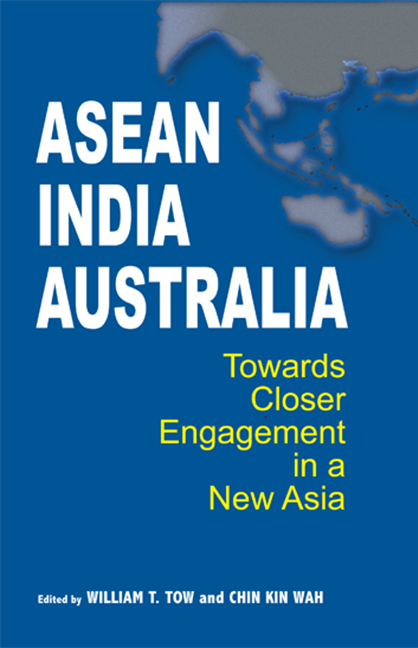Conclusion
Published online by Cambridge University Press: 21 October 2015
Summary
THE coming century will not, as many commentators claim, be the Asian century, but the Asia-Pacific century — the period in which not just China and India, but also Vanuatu, Nauru, the Solomon Islands and Niue will march, arm in arm, to the place in the global sun that population (China, India), quality of resorts (Vanuatu), density of incontinent pigeons (Nauru) and some other, unrelated things (Niue) have made theirs by right of birth.
That is why Kevin Rudd's idea for an Asia-Pacific community is so brilliant. APEC, ASEAN, ASEAN Plus Three, the ASEAN Regional Forum and the East Asian Summit aside, the need for more and better institutions in this region has never been more acute. By 2020 each country must aim to be attached to at least 10 region-wide institutions. Laos, Mongolia and Papua New Guinea, for instance, must strengthen their triangular dialogue over water scarcity and fish, making sure not to exacerbate Chinese fears of “encirclement” by an alliance of fish-poor quasi-autocracies. Bhutan, Bangladesh and Brunei must form a trilateral security summit around the fact their names all start with B.
There must be a quadrilateral dialogue over food security, and a seven-course degustation menu to go with it. The Six-Party Talks must be subsumed within the ASEAN Regional Forum and turned into a bi-annual cocktail event. The Indian Premier League must be expanded to include Japan, Indonesia and Australia in a concert of cricket- and non-cricket-playing democracies: where negotiation through diplomatic channels on the great issues of the day may have failed, negotiation through sledging will almost certainly succeed.
Exhibiting an acerbic wit that would not have gone down very well with international relations specialists, let alone the Rudd administration, which seemed to recommend a European Union-style body for the Asia-Pacific, Aaron Timms's tongue-in-cheek op-ed in the Sydney Morning Herald of 11 June 2008 (“Asia-Pacific — Too Cool to be Just Square”) provides a useful reality check on the envelope of multilateralism, “community-building”, and cooperation in the Asia-Pacific. In an era of regionalism and multilateralism, the ambitious nature of a trilateral study to string Australia, ASEAN, and India into coherence was destined to be challenging.
- Type
- Chapter
- Information
- ASEAN-India-AustraliaTowards Closer Engagement in a New Asia, pp. 361 - 368Publisher: ISEAS–Yusof Ishak InstitutePrint publication year: 2009



